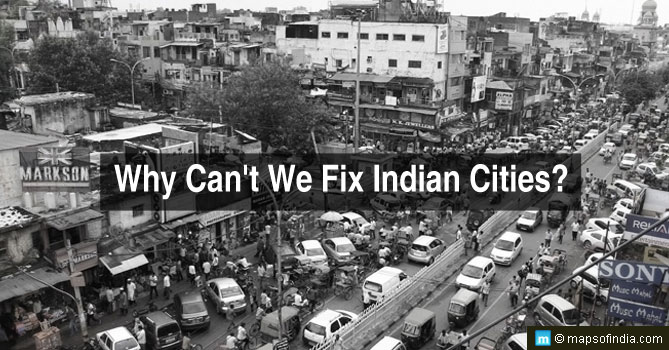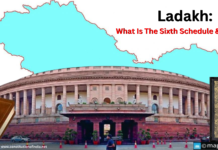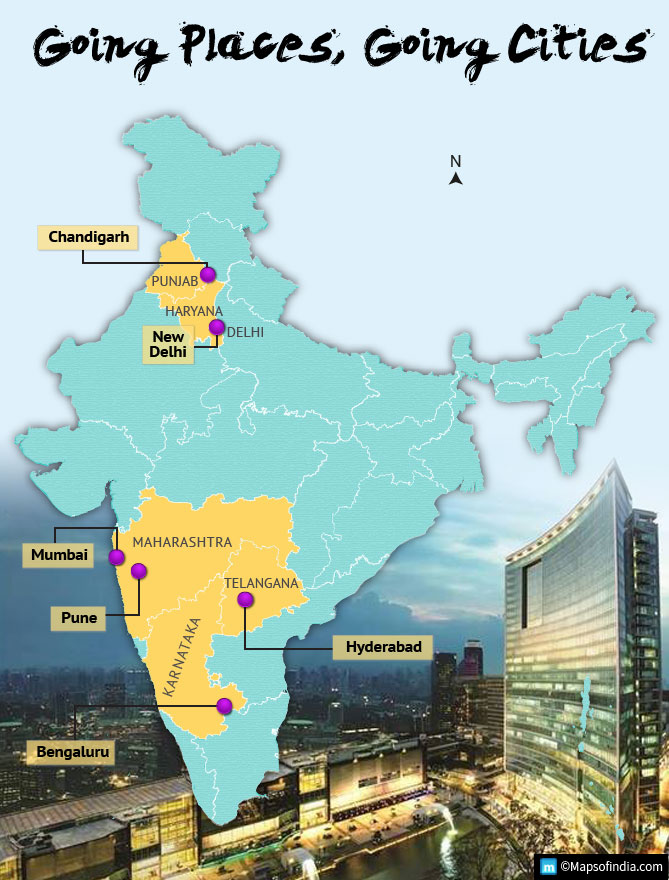
Two days back, when I booked an online app-based cab service to drop my father to his workplace, the cabbie refused to come inside my colony, The reason being the narrow lanes and badly dug up roads. And this left me paranoid thinking about how to call an ambulance or a cab for my father who’s under chemotherapy and might require medical supervision any moment. And not just this particular issue. There are several other issues that made me reflect on the unbridled urbanisation and the (lack of) basic civic amenities in Delhi and other major cities of India.
Unauthorised colonies in Delhi
The neighbourhood where I live is under construction and repair for over fifteen days now. Different pipelines being laid by multiple agencies. And this is not the first time. Delhi has various kinds of settlement types, and the most common type is ‘unplanned colonies’. These ‘unplanned colonies’ are those which are not as per the Delhi master plan regulation, and do not adhere to building and land use laws. Due to which, these colonies face lack of basic civic amenities. Poorly constructed roads, open manholes, substandard speed breakers, and lack of regular water and sewage infrastructure in more than 1700 colonies are some of the issues that make a metropolitan city like Delhi ‘not so developed’. Ironically, a well-maintained road is a fundamental right of every citizen in this country.
Monsoon madness in Mumbai
Similarly, the problem lies not just in Delhi but across various other big cities of India. As Malishka Mendonsa rightly puts in her latest song “Geli, Geli, Mumbai Khadyat…” (Mumbai has gone down the rain). Indeed, the financial capital of India, submerges under rainwater almost every year during the monsoon. Since 2005, Mumbai comes to a standstill during the rainy season due to waterlogging and flooding. Several deaths are reported every year, but the situation invariably remains the same. On July 2, 2019, nearly 375.2 mm rain was reported in the dream city, which is considered to be the “second-highest 24-hour rainfall in July” as per India Meteorological Department (IMD). And due to the lack of proper drainage system, nearly 32 deaths have been reported. Daily life is disturbed as schools and colleges are shut, bus and local train services disrupted, and more than fifty flights cancelled so far. But the excuses are at the tip of the tongue. Civic chief of Mumbai said that climate change is responsible for the flood, as “we never have rainfall in two days equal to a month’s lot”. Now the million-dollar question is, why the financial capital of our country is not equipped to handle a calamity which can be foreseen? In countries like Singapore, it rains almost every day, but the city doesn’t come to a halt.
Waste disposal hazards in Bengaluru
Likewise, Bengaluru, which has ranked nineteenth on the global list of the top 25 high-tech cities in the world, has a persistent waste management crisis. The city constantly struggles with humongous garbage. To deal with the crisis, government has directed BBMP (Bruhat Bengaluru Mahanagara Palike) workers to collect only segregated waste i.e. dry, wet, hazardous. However, this has caused another problem altogether. To reduce their burden, workers sometimes end up burning piles of mixed waste, which turns into toxic gases and affects the environment. Municipal corporation of Bengaluru is yet to figure out a cost-efficient way to end this practice and streamline waste disposal.
Severe water crisis in Chennai
Chennai, another metro city of India with a population of close to 10 million people, requires 880 million litres of water per day but is able to supply only 525 million litres. This year, the city is facing a mega crisis, such as extreme heatwave, no rains to provide relief, and acute water shortage on top! And it is clearly not prepared to deal with it. Moreover, instead of coming up with a sustainable plan, government authorities have instructed all the major temples to pray to the rain god for water. Is this the best a tier I metro city in India can do?
Conclusion
There are various other issues that we are forced to deal with in our day-to-day lives – electric cables hanging dangerously, missing manhole covers, open defecation. These are all life-threatening situations. Keeping the present scenario in mind, all I can think of is – who’s going to take responsibility for our lives in urban areas mushrooming around the country? Surely not the civic bodies!
Related Links:
Best Cities 2018 – Places and Cultures that Impress
Will the national capital break the noose of air pollution this year?
Pollution in Delhi: How Can It Be Controlled?
29 Indian cities highly vulnerable to earthquakes, says National Centre for Seismology (NCS)
Swachh Survekshan 2017: Indore cleanest city, Bhopal at No 2, Gonda dirtiest
Mumbai Beats Contradictions to Rank 21st in City Wealth Index
Choking Over Pollution: Delhi’s Toxic Air Truth
Cities That Have Served As The Capital Of India




